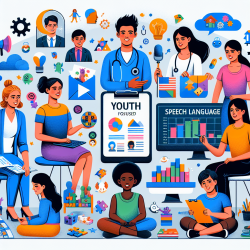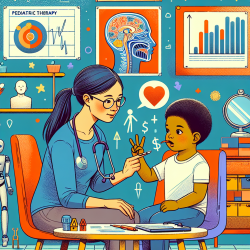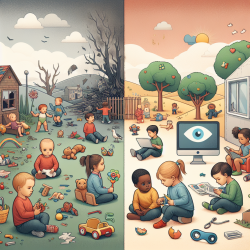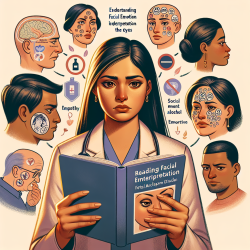Introduction
In the ever-evolving landscape of special education, understanding the unique sensory needs of students with Autism Spectrum Disorder (ASD) and Intellectual Disability (ID) is paramount. The recent study titled "Characterizing Sensory Phenotypes of Subgroups with a Known Genetic Etiology Pertaining to Diagnoses of Autism Spectrum Disorder and Intellectual Disability" provides groundbreaking insights that can help practitioners enhance their skills and tailor interventions effectively.
The Study: A Closer Look
This research delves into the sensory behaviors of individuals with ASD and ID, focusing on genetic subgroups like ADNP, CHD8, DYRK1A, GRIN2B, and SCN2A. By analyzing caregiver reports via the Sensory Profile, the study identifies distinct sensory phenotypes, offering a nuanced understanding of how genetic factors influence sensory processing.
Key Findings and Implications
- Poor Registration and Sensory Seeking: The study highlights that individuals with specific genetic etiologies often exhibit poor sensory registration and increased sensory seeking behaviors. This insight can guide practitioners in developing strategies that address these unique sensory needs.
- Genetic Subgroup Variations: Each genetic subgroup presents a unique sensory profile. For instance, the ADNP group shows prominent sensory seeking across multiple domains, while the CHD8 group exhibits low sensory thresholds, particularly in auditory sensitivities. Understanding these variations allows for more personalized interventions.
- Impact of Functional Abilities: The research underscores the importance of considering individual differences such as motor and language abilities when assessing sensory behaviors. Practitioners can use this information to create more effective, individualized plans.
Practical Applications for Practitioners
By integrating the findings from this study, practitioners can enhance their approaches in several ways:
- Tailored Interventions: Develop interventions that cater to the specific sensory profiles of students, ensuring that strategies are aligned with their genetic and functional profiles.
- Enhanced Assessment: Utilize tools like the Sensory Profile to identify sensory behaviors accurately and monitor changes over time, adapting interventions as needed.
- Collaborative Efforts: Engage with caregivers and other professionals to gather comprehensive insights into a student's sensory experiences, fostering a holistic approach to support.
Encouraging Further Research
While this study provides valuable insights, it also opens avenues for further research. Practitioners are encouraged to explore the neural underpinnings of sensory behaviors and investigate how these insights can be translated into practice. By continuing to build on this foundation, the field can move towards more effective and personalized support for individuals with ASD and ID.
Conclusion
Incorporating the outcomes of this research into practice can significantly enhance the support provided to students with ASD and ID. By understanding and embracing the unique sensory phenotypes associated with genetic subgroups, practitioners can unlock the potential of these individuals, fostering a more inclusive and supportive educational environment.
To read the original research paper, please follow this link: Characterizing Sensory Phenotypes of Subgroups with a Known Genetic Etiology Pertaining to Diagnoses of Autism Spectrum Disorder and Intellectual Disability.










